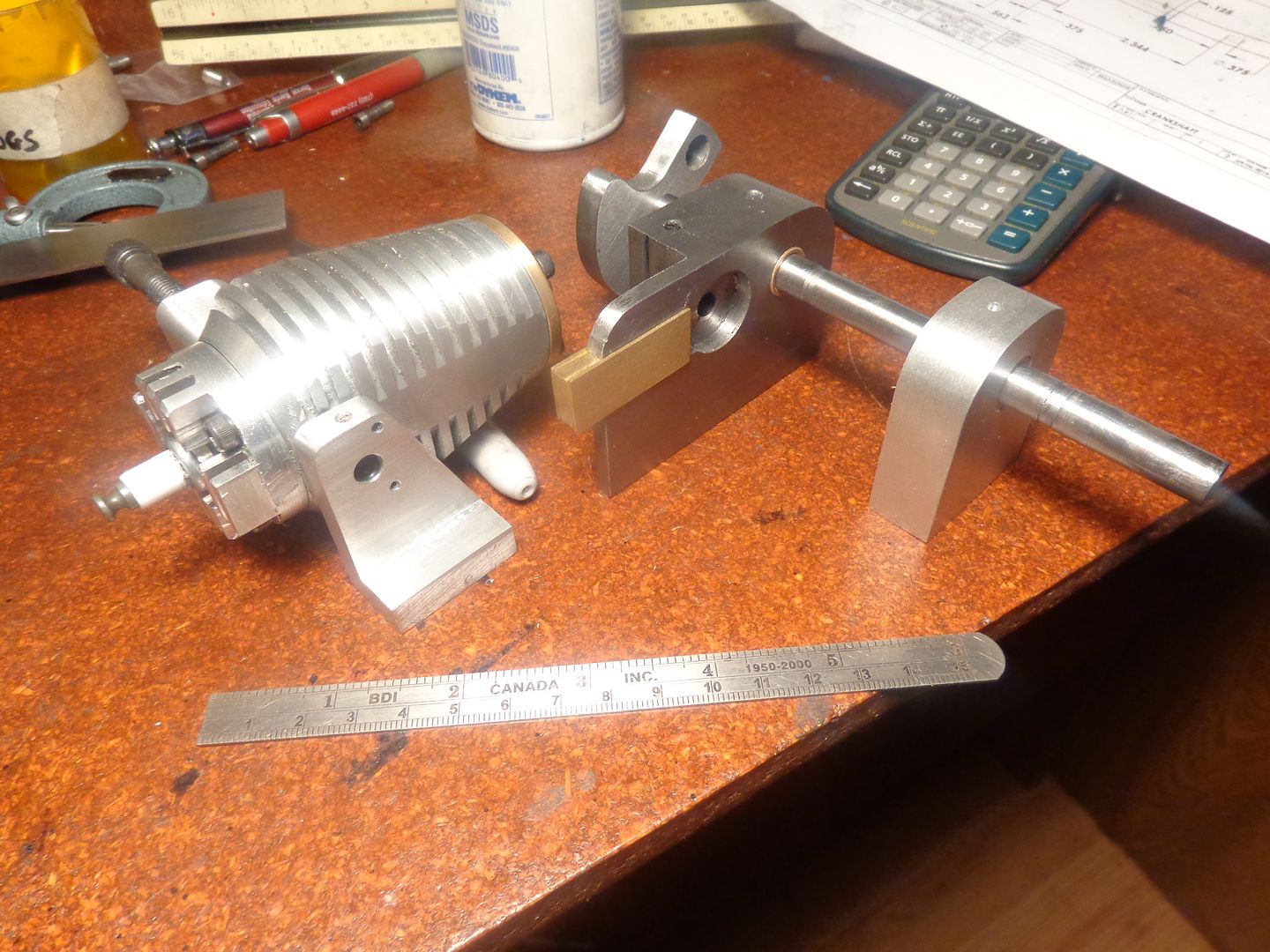A crankshaft web in the process of being born. I have decided to make this a 3 piece crankshaft, pressed together. The web is 5/16 crs flatbar. A couple of tricks are involved here. #1--when drilling/reaming the holes for the crankshaft and the rod journal, don't use the mill vice. Put a flat piece of sacrificial plate on top of the mill table and clamp the bar which will become the web to the flat plate. Vices (at least the vices I can afford) always tip the piece being milled a small bit when closed on the part, and if you drill/ream these holes while the piece is held in the vice, the rod journal will orbit as it rotates, and you definitely don't want that. I use an undersize reamer for the two critical holes, at 0.3735" diameter. I use drill rod for the crankshaft, because it comes in at .00025 to .0005" oversize A total of .0002" interference seems about right for this size of stock when press fitted together. If, in my judgement the pieces don't press hard enough, I will cross drill and dowel with a .093" hardened pin.






























![DreamPlan Home Design and Landscaping Software Free for Windows [PC Download]](https://m.media-amazon.com/images/I/51kvZH2dVLL._SL500_.jpg)


































